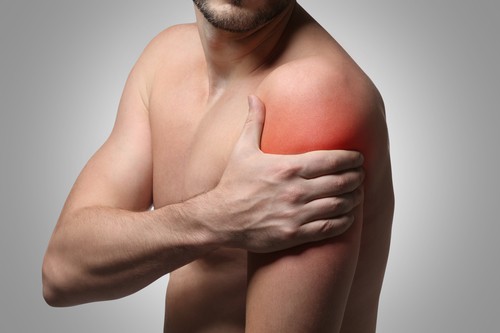
Well you either love cricket or hate cricket. I am in the LOVE category and no doubt will waste plenty of time lazing on the couch watching the Ashes.
For those of you that play the game, you will know that cricket can take quite the toll on your body. Our focus will be on the bowlers & throwing action for the purpose of this newsletter. But the bowling/throwing action can also be applied to other sports that require an overhead action, such as tennis, squash & basketball.
The shoulder is a unique joint in the body in that it is mostly held together with ligaments and muscle  contraction. The socket is terribly shallow for the size of the round ball that is the head of the upper arm bone (humerus). The joint has been likened to trying to balance a soccer ball on your forehead, with both the ball and the head/body constantly moving to maintain “balance” and stop the ball from dropping off. This creates a problem with stability but allows for a “windmill” range of movement.
contraction. The socket is terribly shallow for the size of the round ball that is the head of the upper arm bone (humerus). The joint has been likened to trying to balance a soccer ball on your forehead, with both the ball and the head/body constantly moving to maintain “balance” and stop the ball from dropping off. This creates a problem with stability but allows for a “windmill” range of movement.
The rotator cuff is the major muscle group that provides the shoulder joint with dynamic stability, holding the ball in the socket when moving the arm.
The glenoid labrum is a circular cartilage structure designed to “cup” or deepen this socket and provide attachment for the biceps tendon.
The anatomy often lets us down by not being able to cope with the functional demands. Some injuries develop acutely, such as occurs with one hand throw when off balance, and some develop over a period of time through lots of high repetition – degenerative type injuries. The two most commonly injured structures in cricket are the infamous rotator cuff and the glenoid labrum.
All cricketers should pay attention to flexibility, strength and endurance of the shoulder muscles. Correct throwing and bowling technique can greatly reduce injury risk. Shoulder stabilisation exercises under the supervision of an Osteopath can also help prevent damage to the Rotator Cuff tendons.
In particular, bowling and fielding practice should be increased gradually to allow the Rotator Cuff tendons to adapt.